April 16, 2008
Crown Glass Videos
A video demonstrating the making of 'Crown Glass', likely the most ancient method of making 'sheets' of flat glass.
The most surprising part of this is the shape of the piece just before 'spinning out'. I would have thought it to be rounder rather than so flat. Interesting.
The video comes from the anthropologist and historian Alan Macfarlane whose studies include the study of materials and how they affect the development of societies. The Alan Macfarlane website includes videos showcasing the impact of glass spectacles and glass windows on the development of western society, and there are even more glass related videos on his youtube area under the avatar ayabaya.
A few more crown glass related bits and pieces below the fold...
Crown Glass Images
The following images are from a PDF file on 'Industrial Vernacular'. I put them up here mainly to show how much larger crown glass can be. I've heard of them up to 4 feet in diameter, with most being around 3 feet in diameter.
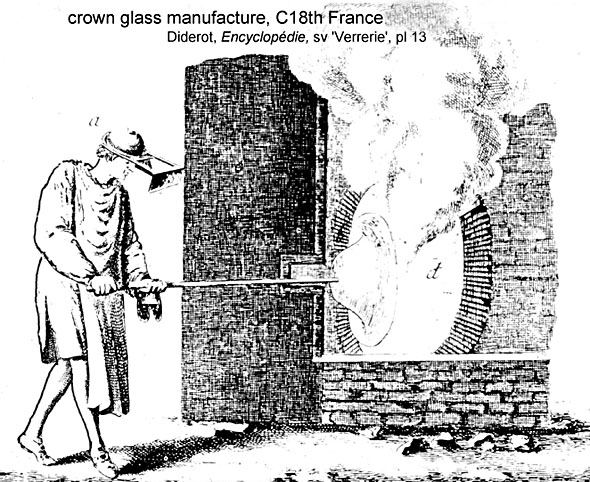
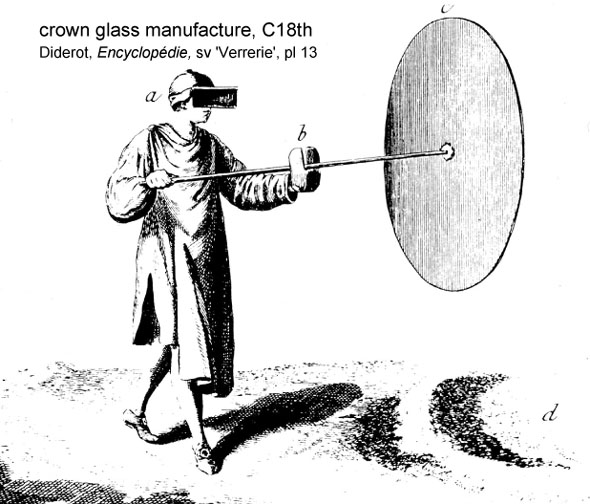
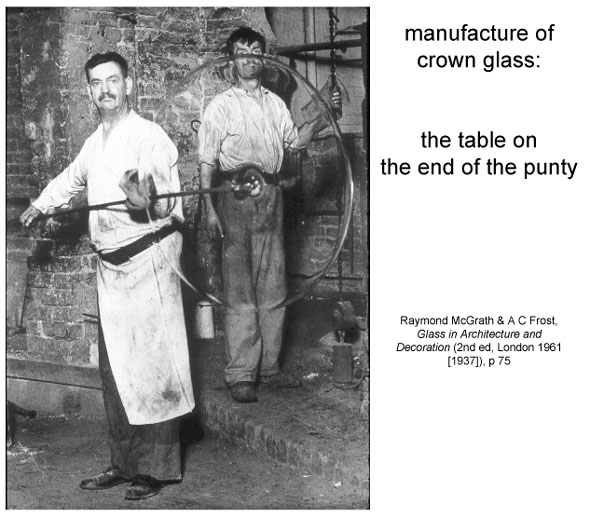
The larger size is related to the fact that these were made for the window glass. Since crown glass was a method of making window glass, the middle of the crown known as the bullseye, was considered a cheap by-product. Nowadays, since so little crown glass is manufactured, the bullseye is more valued than the flat glass surrounding it.
"Crown Glass" Today
Very few glass shops make crown glass today. One, the London Crown Glass, has a webpage featuring historical window glass manufacturing processes. No video, alas. Another company that produces some crown glass is English Antique Glass, out of Birmingham in England.
I did find this recent video of a contemporary small glass-blowing studio making a 'plate', in much the same manner that the crown glass is made. I can't help but observe that while this studio has more gadgets to play with (gas jets, rolling blowpipe holders, etc) and eager assistants to help there is not a clear sense of what they are doing, at least compared to the glassblower in the Mafarlane video.
Glass blowing dudes make a 'plate' -
In terms of big name glass artists, I can't help but notice that Chihuly's Macchia are just large colorful, textured crown glass pieces, except that the piece is held down just after being spun out and allowed to slump into the 'macchia' shape.
I know that stained glass artists such as Narcissus Quagliata and Dick Weiss have commissioned rondels, sometimes large rondels, to be incorporated into their windows and screens. Rondels are basically the same as crown glass though on a smaller scale and with no intention of cutting the piece apart.
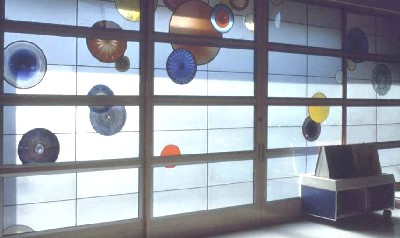
Emeryville Child Development Center, Emeryville, CA, 1991
by Narcissus Quagliata
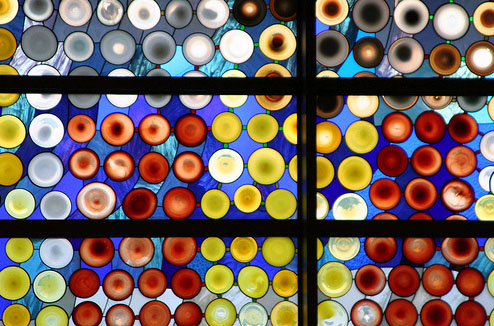
Cow on its Side, Seattle-Tacoma International Airport
by Dick Weiss
I don't know of any stained glass artists who have commissioned glass blowers to create crown glass - colored, textured or otherwise - with the intention of the glass being cut up for stained glass windows. I suppose the handblown object these days seems too precious an object to cut up.
There are lots of small hot glass shops springing up across the US and I would love to see one of these hot shops start to experiment with making crown glass for the stained glass artist, or at least larger rondels that could produce some interesting results if cut up and incorporated into panels.
A Personal View
In preparing for the Glass Art Society Conference in 2006, I worked with a glassbloweer in trying to make specialty rondels that I was thinking of as mini-crown glass pieces. My intention was to cut them up and make some small panels with them. This was the first example - only about 5 inches across.
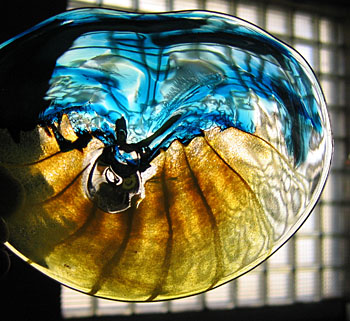
The process was interesting to watch and I can see where it would take considerable practice to get the rondel big enough to be usable as crown glass, especially when variagated color is factored in.
And yes, I can personally attest to how difficult a decision it is to cut it up. As it is, we ran out of time and I only have a few of these, and I have not yet come up with a good enough design that would justify cutting them up.
Posted by Tom at April 16, 2008 01:48 PM